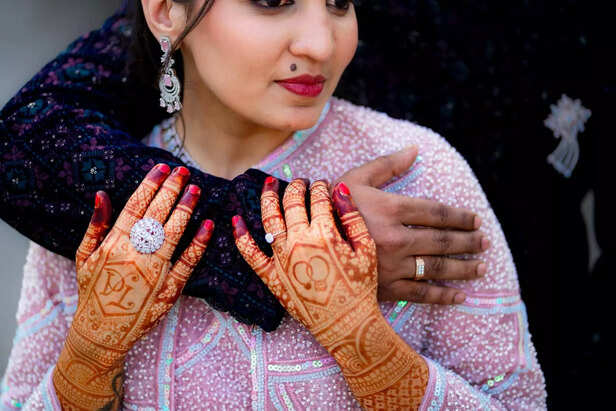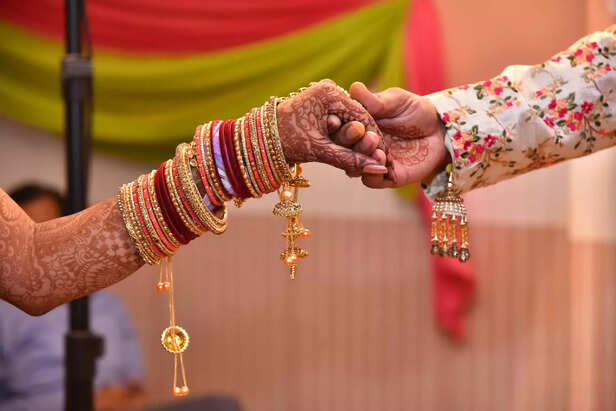Why Indian Men Love Women in Short Clothes, But Not When It’s Their Girlfriend?
Riya Kumari | Apr 23, 2025, 23:14 IST
Indian traditional outfit
( Image credit : Pexels )
Ah, the age-old paradox of Indian masculinity. You know the one – the kind that thrives on a rather, shall we say, ‘complicated’ relationship with women, especially when it comes to clothing. Short clothes? A sight for sore eyes in a Bollywood dance number, absolutely. But when it’s their girlfriend rocking that same outfit? Oh, that’s a whole different ball game. Picture this: one minute, he’s drooling over some insta-model in a chic little skirt, and the next, he’s clenching his jaw at his girlfriend’s perfectly fine crop top. Ah, men—always a mystery wrapped in a riddle, dressed in confusion.
There’s a strange contradiction at the heart of the way Indian men interact with women in short clothes. You’ve probably seen it play out countless times: A woman walks by in a dress or skirt, and it’s like the world stops. The stares, the admiration, the low-key envy – they’re all there. But when it’s their girlfriend, or the woman they’re emotionally attached to, in that same outfit? The narrative shifts. Suddenly, the admiration transforms into something darker, more possessive. It’s not about the clothes anymore; it’s about something far deeper. This isn’t just a matter of fashion or desire. It’s a reflection of something that runs much deeper within our society: the conflict between ownership and attraction, between individual freedom and control. It’s a complex dance, one that speaks to larger truths about relationships, identity, and the way we view women in a culture that's both progressive and archaic at the same time.
1. Desire: The Stranger’s Appeal

Let’s start with the simple truth: men are attracted to women who look good. This isn’t some grand revelation, it’s just human nature. But it’s the kind of attraction that’s detached, that exists in the realm of the hypothetical. When a man sees a woman in short clothes, especially someone who isn’t emotionally tied to him, it’s easy to admire her without feeling threatened. He can enjoy the view, experience the rush of desire, and then move on. The woman remains a stranger – someone to admire but not someone to ‘own.’
It’s a fleeting admiration, almost like watching a movie scene you know you’ll forget tomorrow. There’s no emotional investment, no complexities to deal with. It’s just beauty in its most untroubled form. It’s the equivalent of enjoying a song on the radio while driving. You’re aware of it, it entertains you, but once you’ve switched lanes, you’ve moved on.
2. Possession: When She’s Your Girlfriend

Now, let’s shift the lens. The same woman, in the same clothes, is no longer just a distant figure of desire. She’s your girlfriend, someone with whom you share your life, your thoughts, your intimacy. She’s no longer an object of passing admiration; she’s part of your world. And that changes everything. This is where the tension begins. When a man feels ownership over a woman – and yes, that’s the word we often don’t want to use but it’s there, lurking under the surface – the admiration transforms. It becomes a possessive feeling. “She’s mine,” he thinks. “No one else gets to see her the way I do.” It’s not about her looking good anymore; it’s about keeping that beauty confined to him alone.
And there’s the paradox: the very thing he finds attractive when it’s unattainable, he suddenly wants to control when it’s in his life. Possession isn’t always a conscious decision; it’s a product of society’s deep-seated beliefs about relationships, about what it means to ‘belong’ to someone. It’s this belief that a woman’s identity is somehow linked to her relationship status and her partner’s control over her actions. And that’s when freedom starts to feel uncomfortable. For him, it’s not just about admiring the clothes anymore—it’s about fearing the gaze of other men on the woman he has come to think of as his own.
3. The Root of the Conflict: Fear and Insecurity

Let’s get to the heart of the issue: fear. But not the kind of fear that’s obvious or easy to recognize. It’s the subtle, almost invisible fear of losing control, of watching something beautiful be desired by others. It’s the kind of fear that breeds insecurity, that whispers, “If others want her, maybe she’s not yours anymore.”
This fear has nothing to do with the woman’s clothes or her choices. It’s rooted in a deeper sense of identity and masculinity that says, “If I can’t control this, what does that say about me?” It’s not a fear of her doing anything; it’s a fear of losing the role he plays in her life. And this fear, when left unchecked, becomes a toxic mix of possessiveness, control, and shame. The more insecure a man feels, the more he will try to regulate the boundaries of his girlfriend’s freedom. What starts as a harmless admiration for someone else becomes a subconscious drive to restrict and control.
4. The Double Standard: Society’s Subtle Hand

But there’s something more insidious at play here – the role of society’s double standards. We live in a culture that simultaneously celebrates the beauty of women and then tries to box them into predefined roles based on outdated ideals of modesty. The same society that will objectify a woman in short clothes as a desirable object on the street will simultaneously expect her to conform to its own narrow standards of behavior when it comes to her intimate relationships.
This isn’t just a personal failing on the part of men; it’s a societal issue. The expectation that women’s freedom and expression should be confined within the borders of what makes men comfortable is not just pervasive, it’s systemic. It’s the result of generations of conditioning, of teaching women that their worth is tied to how men see them, and of teaching men that their worth is tied to how much control they have over women. When a woman dresses in a way that challenges that control, it feels like a breach of an unspoken contract – even if she’s his girlfriend.
5. The Bigger Picture: Freedom and Respect

So, where does that leave us? At the intersection of desire, fear, control, and respect. If there’s anything to be learned here, it’s that desire doesn’t exist in a vacuum. It’s influenced by so many factors: insecurity, ego, social conditioning, and sometimes, a lack of true understanding of one another. The key to moving beyond this paradox is to understand that relationships should be built on trust and mutual respect. It’s not about controlling what the other person wears or how they express themselves; it’s about appreciating them for who they are, in all their complexity, both inside and out.
This isn’t just about clothes—it’s about seeing your partner as an individual, not a possession. In the end, it’s not the short clothes that cause the problem. It’s the inability to see beyond our fears and insecurities to understand the deeper truth: that love isn’t about ownership. Love is about freedom. And when both partners can embrace that freedom, only then can the admiration, the desire, and the connection truly flourish.
Conclusion:
Next time you see your partner in something bold, something daring, don’t let the instinct to control kick in. Instead, let yourself admire her for the person she is, not the outfit she’s wearing. Because, in the end, it’s not the clothes that matter—it’s the space you give each other to be fully yourself, without fear, without judgment. That’s where real love lives. And that’s something worth holding on to.
1. Desire: The Stranger’s Appeal

Beautiful woman
( Image credit : Pexels )
Let’s start with the simple truth: men are attracted to women who look good. This isn’t some grand revelation, it’s just human nature. But it’s the kind of attraction that’s detached, that exists in the realm of the hypothetical. When a man sees a woman in short clothes, especially someone who isn’t emotionally tied to him, it’s easy to admire her without feeling threatened. He can enjoy the view, experience the rush of desire, and then move on. The woman remains a stranger – someone to admire but not someone to ‘own.’
It’s a fleeting admiration, almost like watching a movie scene you know you’ll forget tomorrow. There’s no emotional investment, no complexities to deal with. It’s just beauty in its most untroubled form. It’s the equivalent of enjoying a song on the radio while driving. You’re aware of it, it entertains you, but once you’ve switched lanes, you’ve moved on.
2. Possession: When She’s Your Girlfriend

Indian couple
( Image credit : Pexels )
Now, let’s shift the lens. The same woman, in the same clothes, is no longer just a distant figure of desire. She’s your girlfriend, someone with whom you share your life, your thoughts, your intimacy. She’s no longer an object of passing admiration; she’s part of your world. And that changes everything. This is where the tension begins. When a man feels ownership over a woman – and yes, that’s the word we often don’t want to use but it’s there, lurking under the surface – the admiration transforms. It becomes a possessive feeling. “She’s mine,” he thinks. “No one else gets to see her the way I do.” It’s not about her looking good anymore; it’s about keeping that beauty confined to him alone.
And there’s the paradox: the very thing he finds attractive when it’s unattainable, he suddenly wants to control when it’s in his life. Possession isn’t always a conscious decision; it’s a product of society’s deep-seated beliefs about relationships, about what it means to ‘belong’ to someone. It’s this belief that a woman’s identity is somehow linked to her relationship status and her partner’s control over her actions. And that’s when freedom starts to feel uncomfortable. For him, it’s not just about admiring the clothes anymore—it’s about fearing the gaze of other men on the woman he has come to think of as his own.
3. The Root of the Conflict: Fear and Insecurity

Holding hands
( Image credit : Pexels )
Let’s get to the heart of the issue: fear. But not the kind of fear that’s obvious or easy to recognize. It’s the subtle, almost invisible fear of losing control, of watching something beautiful be desired by others. It’s the kind of fear that breeds insecurity, that whispers, “If others want her, maybe she’s not yours anymore.”
This fear has nothing to do with the woman’s clothes or her choices. It’s rooted in a deeper sense of identity and masculinity that says, “If I can’t control this, what does that say about me?” It’s not a fear of her doing anything; it’s a fear of losing the role he plays in her life. And this fear, when left unchecked, becomes a toxic mix of possessiveness, control, and shame. The more insecure a man feels, the more he will try to regulate the boundaries of his girlfriend’s freedom. What starts as a harmless admiration for someone else becomes a subconscious drive to restrict and control.
4. The Double Standard: Society’s Subtle Hand

Indian wedding
( Image credit : Pexels )
But there’s something more insidious at play here – the role of society’s double standards. We live in a culture that simultaneously celebrates the beauty of women and then tries to box them into predefined roles based on outdated ideals of modesty. The same society that will objectify a woman in short clothes as a desirable object on the street will simultaneously expect her to conform to its own narrow standards of behavior when it comes to her intimate relationships.
This isn’t just a personal failing on the part of men; it’s a societal issue. The expectation that women’s freedom and expression should be confined within the borders of what makes men comfortable is not just pervasive, it’s systemic. It’s the result of generations of conditioning, of teaching women that their worth is tied to how men see them, and of teaching men that their worth is tied to how much control they have over women. When a woman dresses in a way that challenges that control, it feels like a breach of an unspoken contract – even if she’s his girlfriend.
5. The Bigger Picture: Freedom and Respect

Indian couple
( Image credit : Pexels )
So, where does that leave us? At the intersection of desire, fear, control, and respect. If there’s anything to be learned here, it’s that desire doesn’t exist in a vacuum. It’s influenced by so many factors: insecurity, ego, social conditioning, and sometimes, a lack of true understanding of one another. The key to moving beyond this paradox is to understand that relationships should be built on trust and mutual respect. It’s not about controlling what the other person wears or how they express themselves; it’s about appreciating them for who they are, in all their complexity, both inside and out.
This isn’t just about clothes—it’s about seeing your partner as an individual, not a possession. In the end, it’s not the short clothes that cause the problem. It’s the inability to see beyond our fears and insecurities to understand the deeper truth: that love isn’t about ownership. Love is about freedom. And when both partners can embrace that freedom, only then can the admiration, the desire, and the connection truly flourish.
